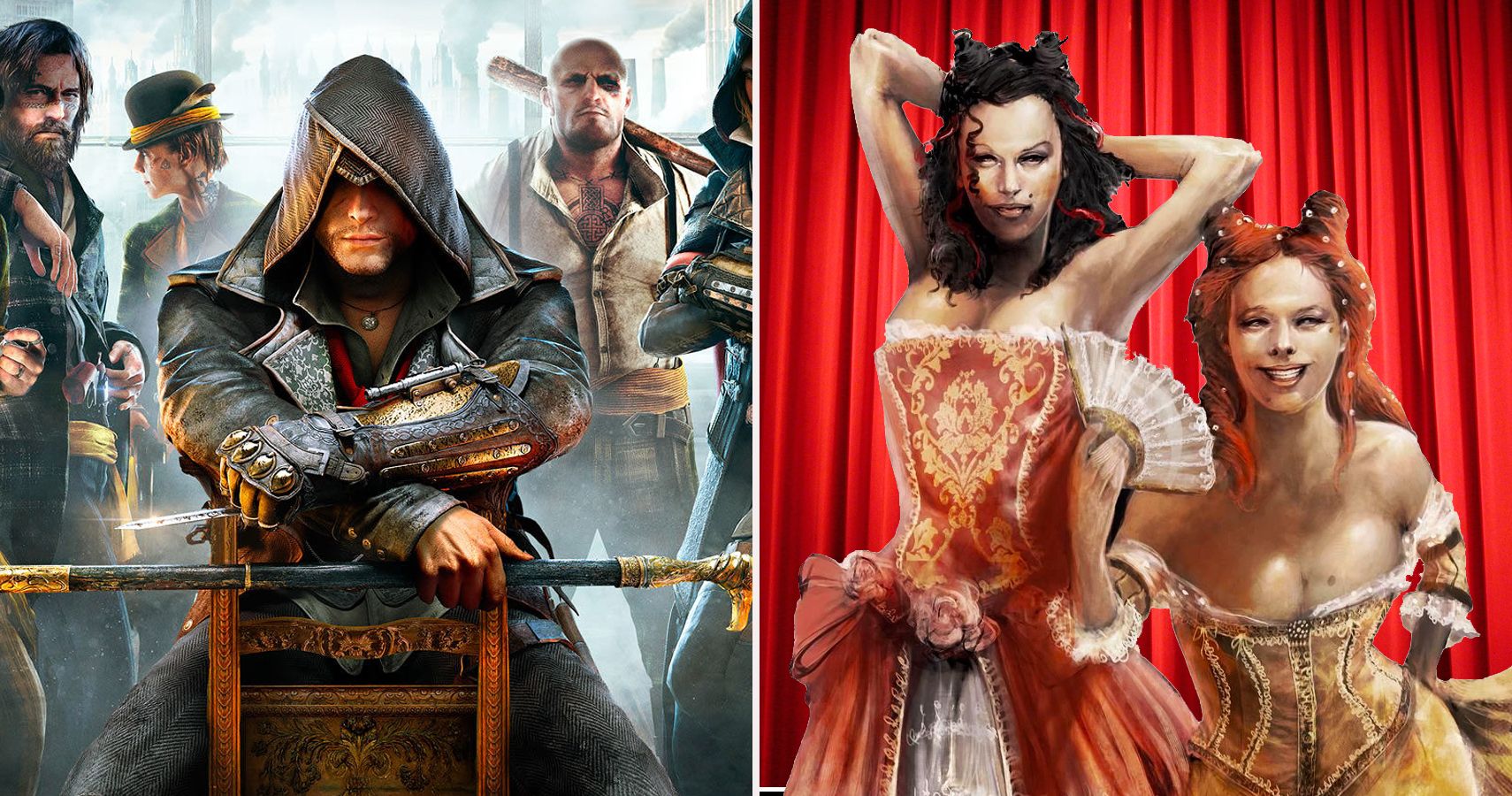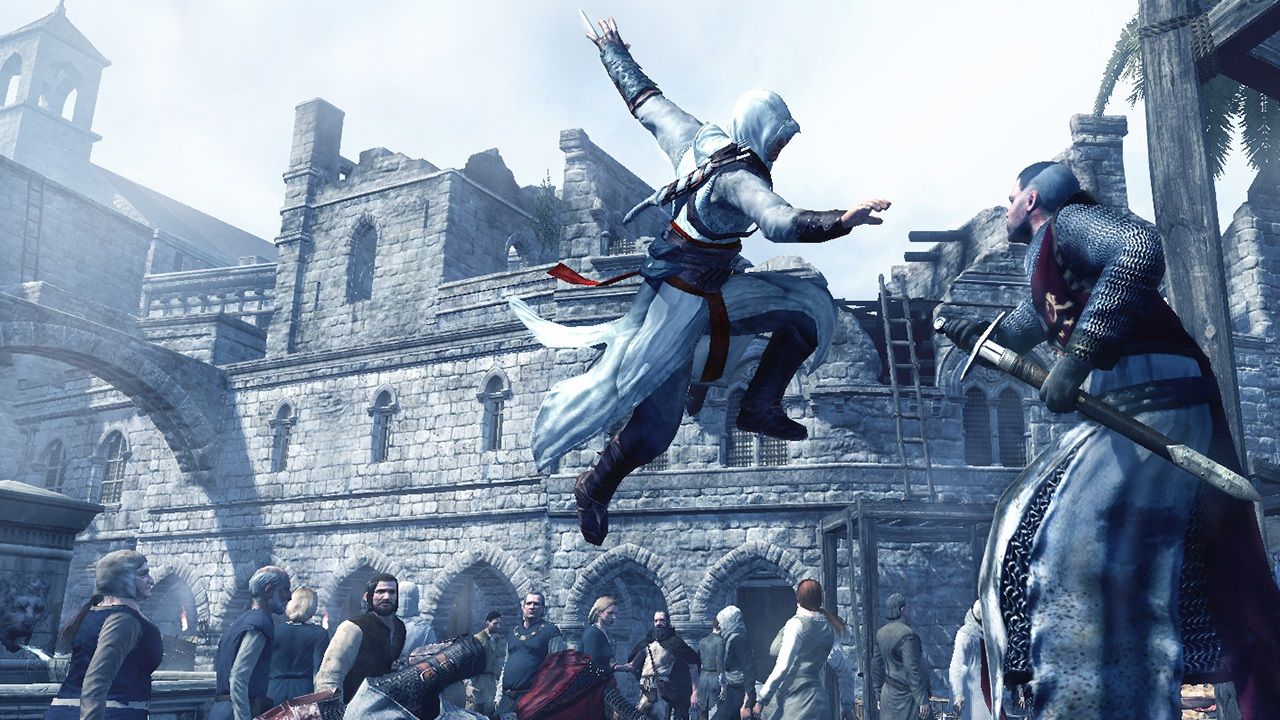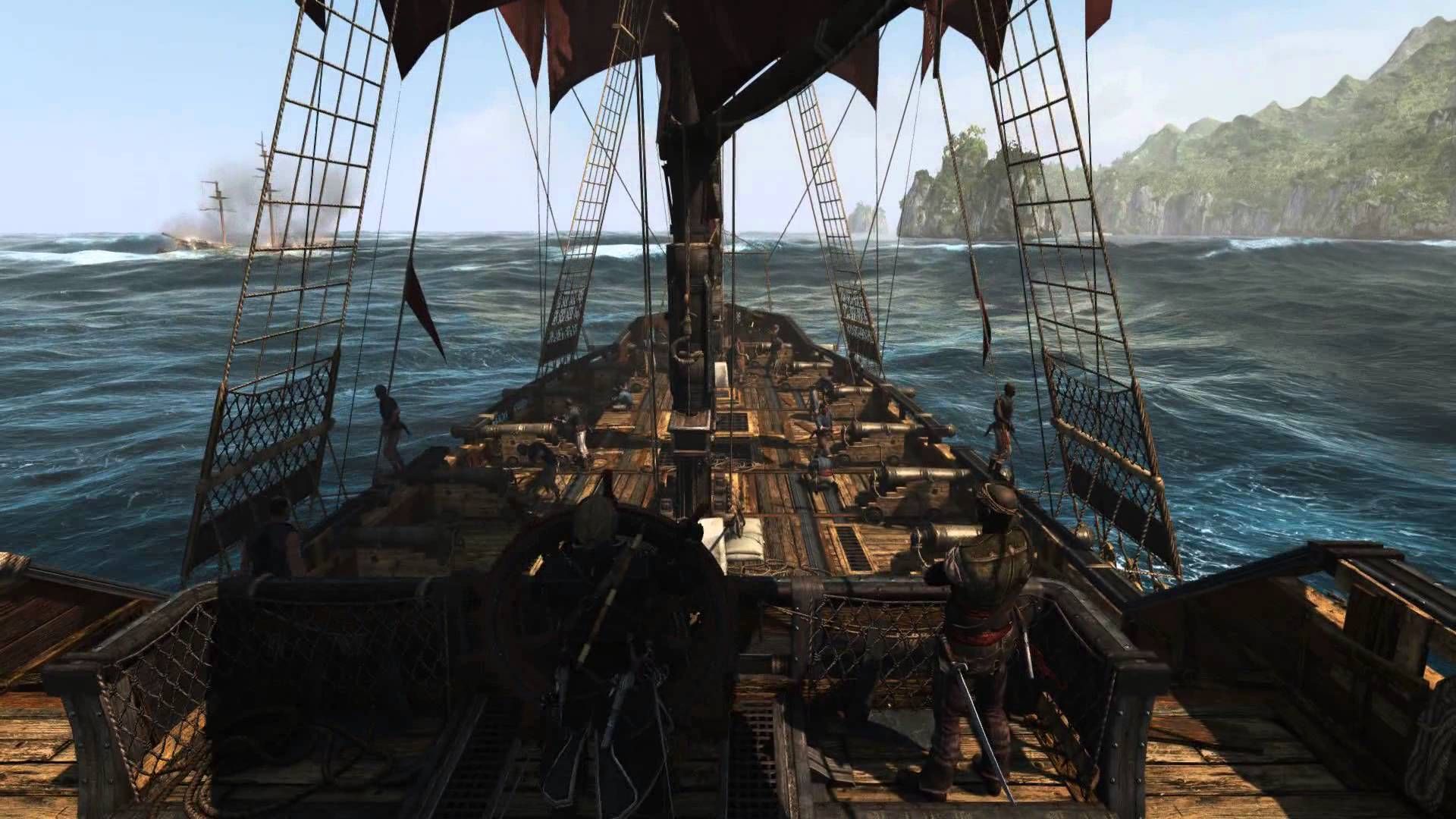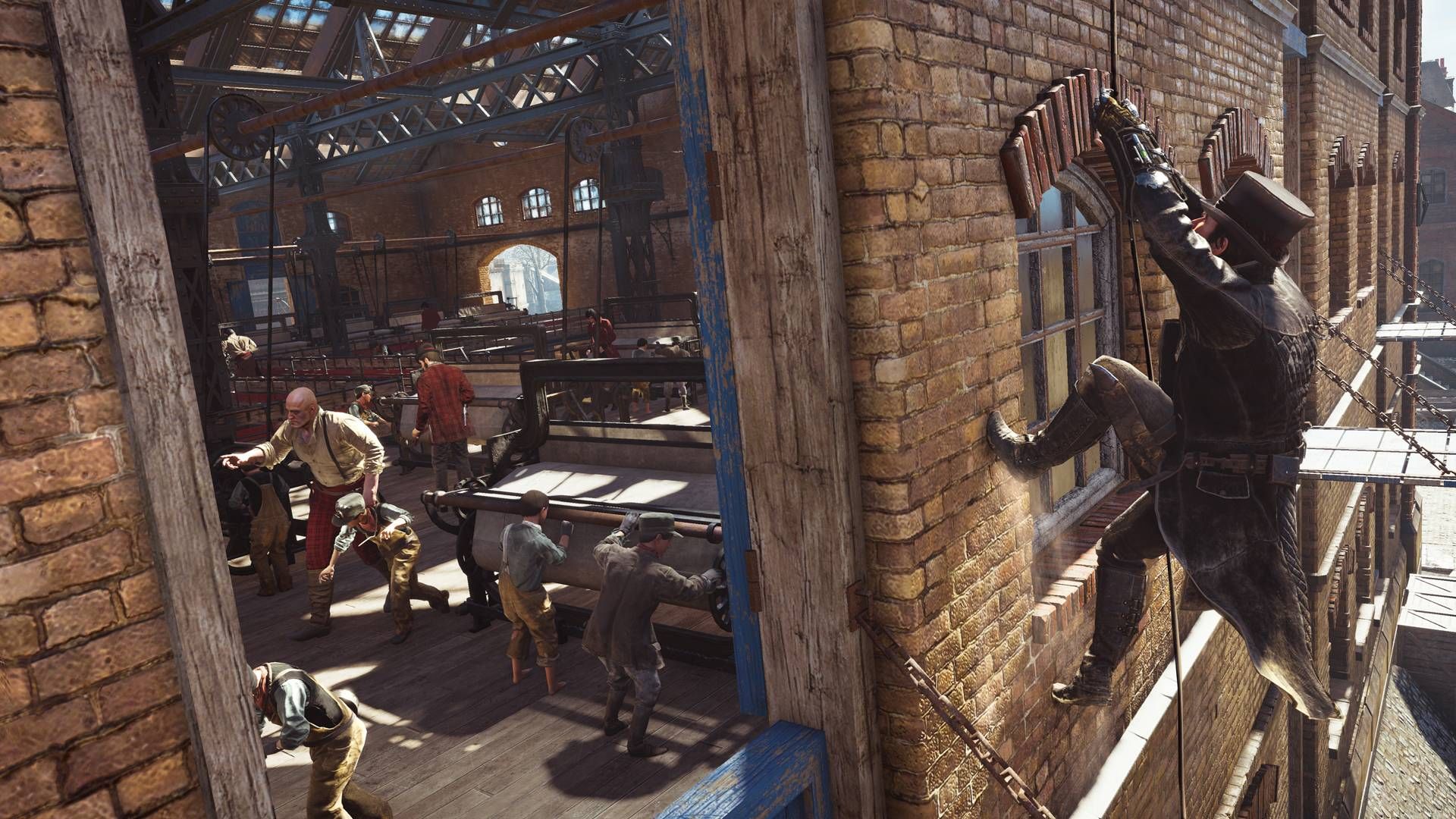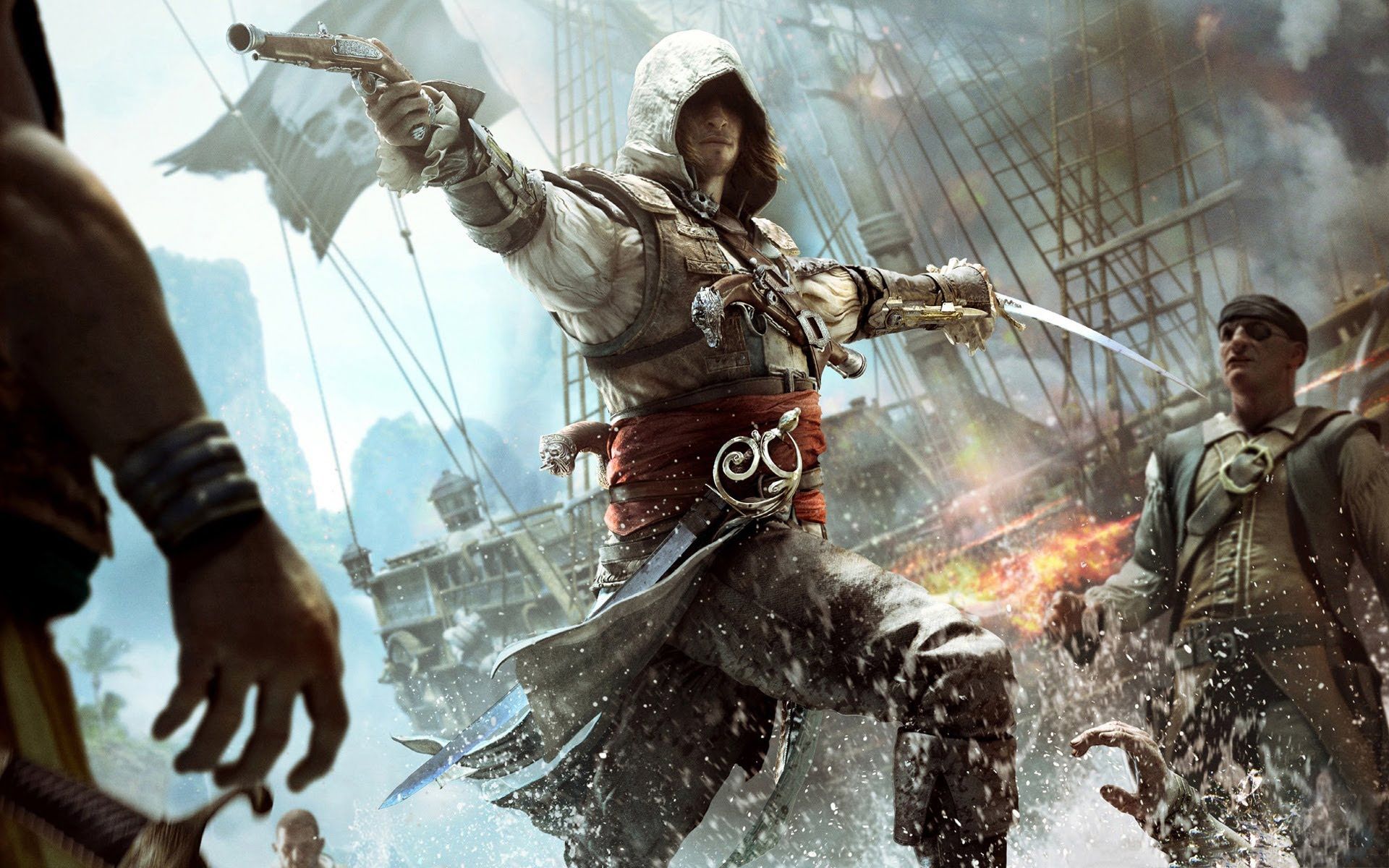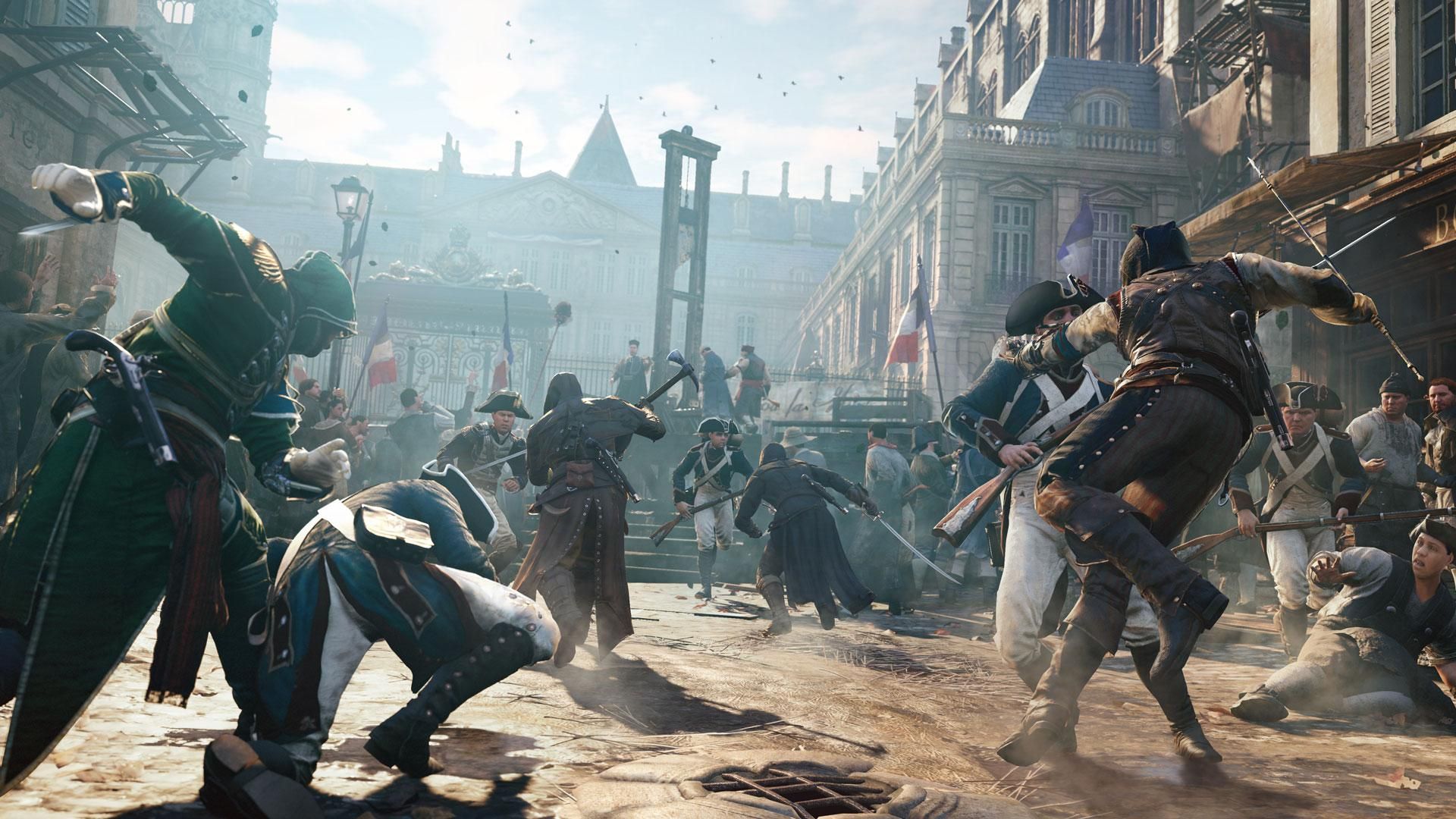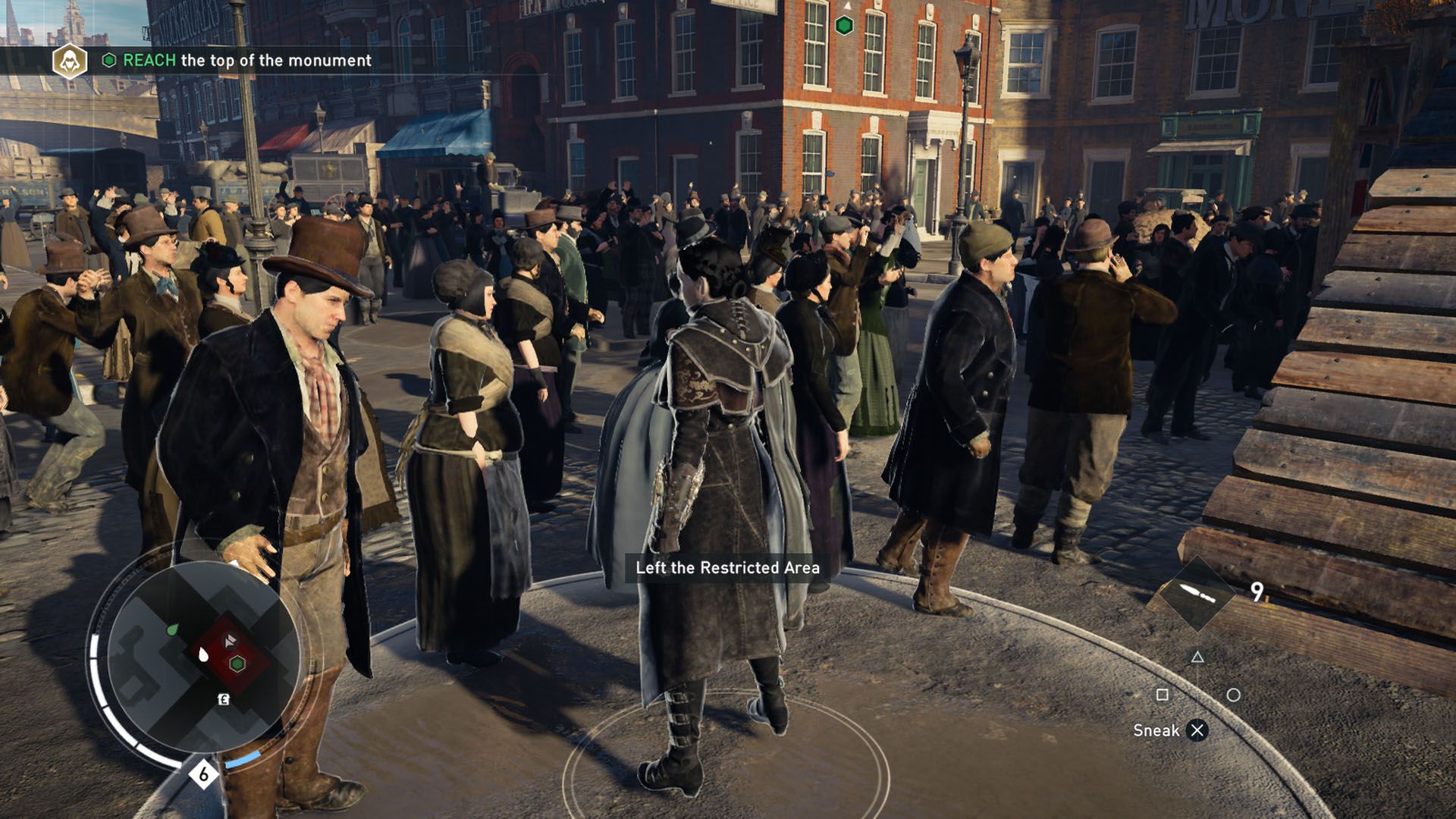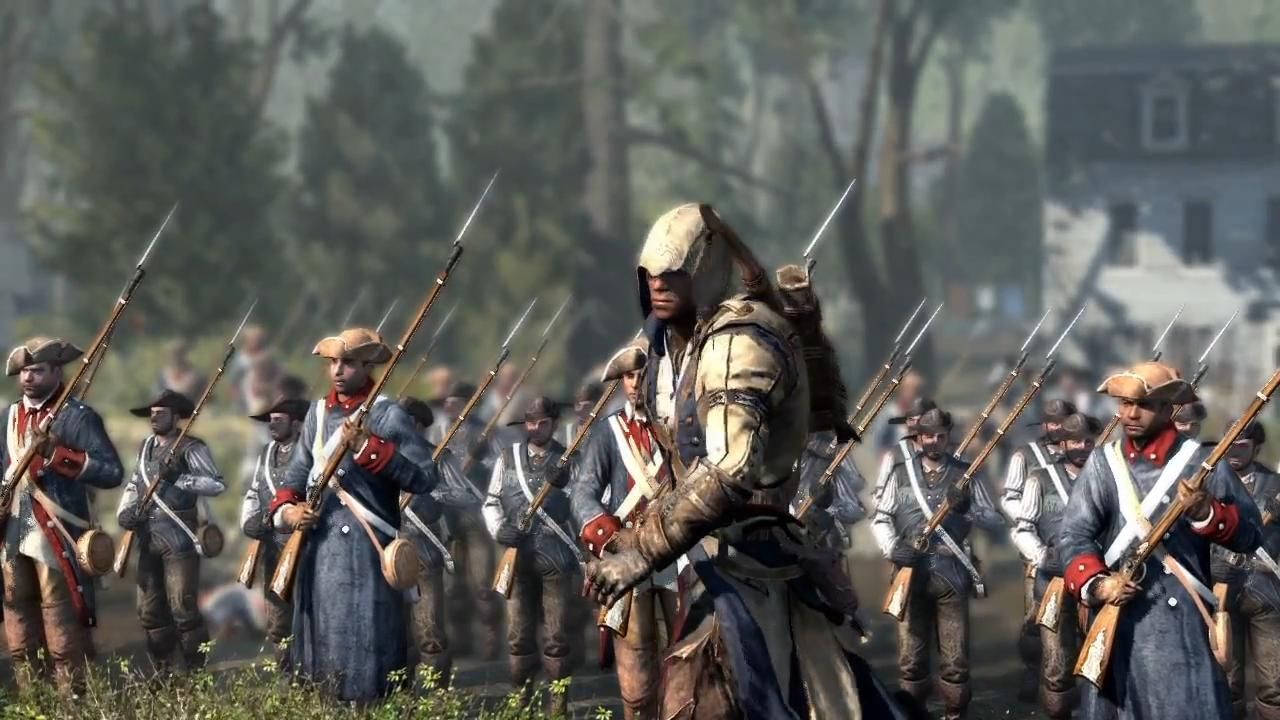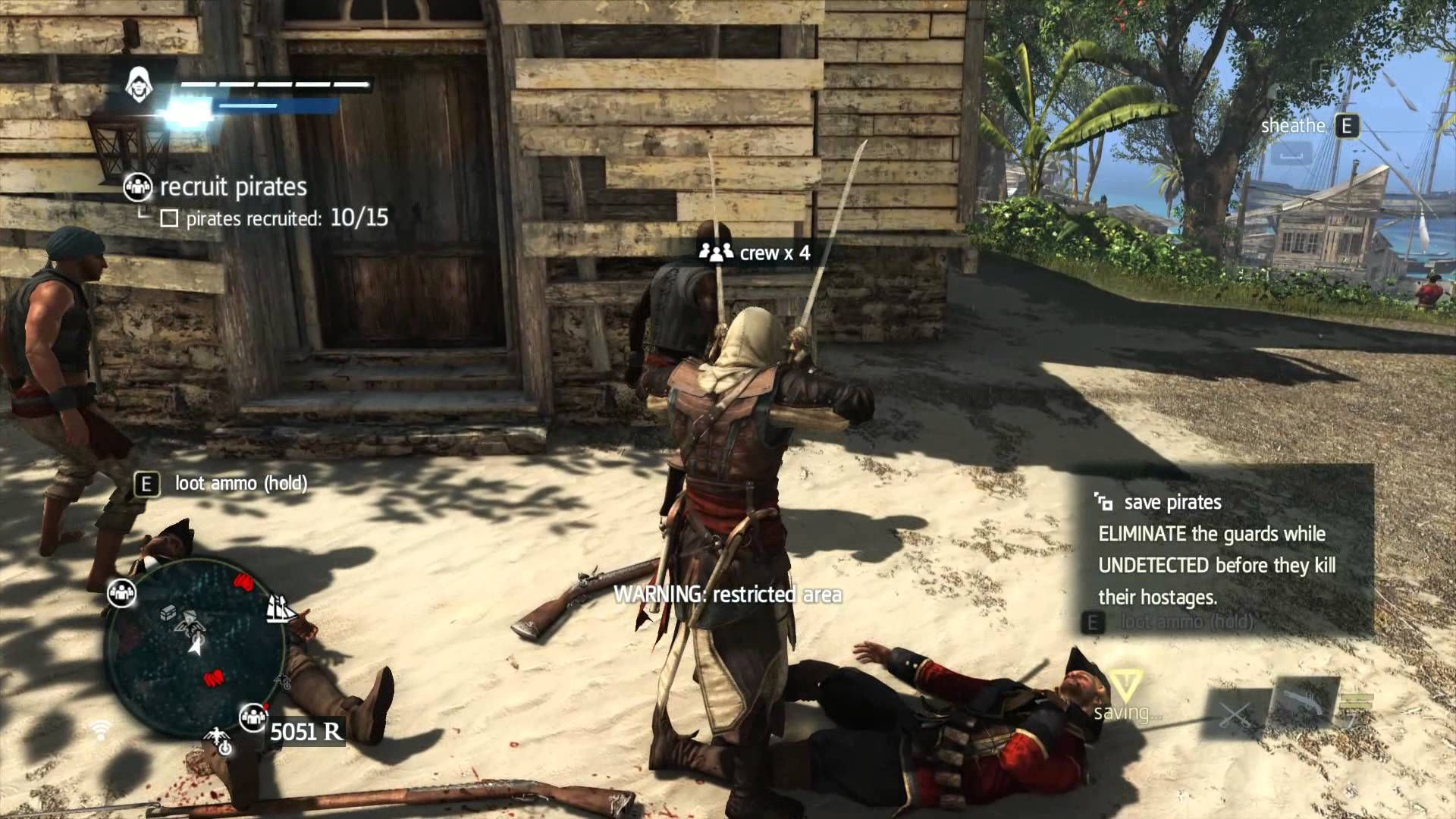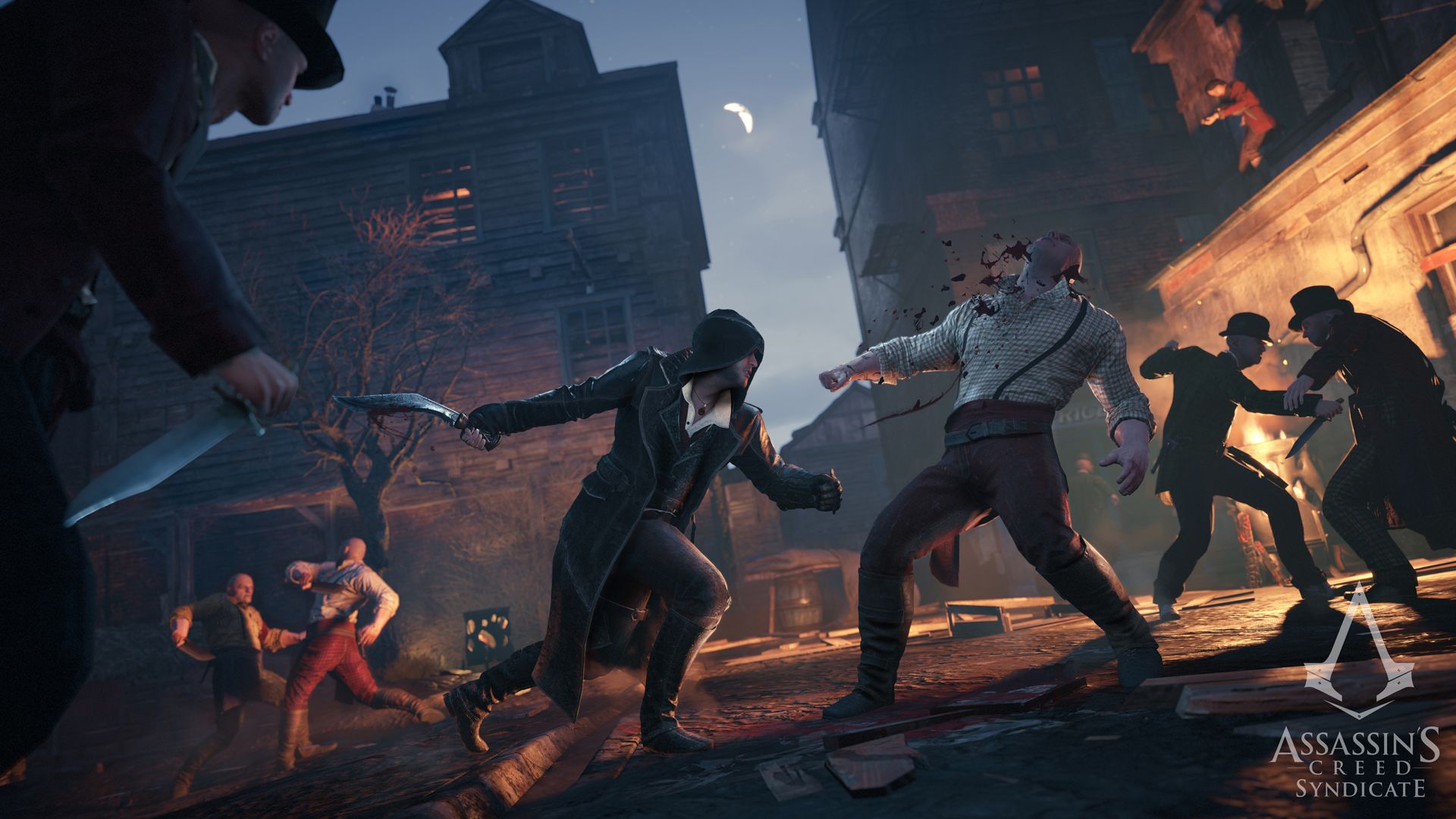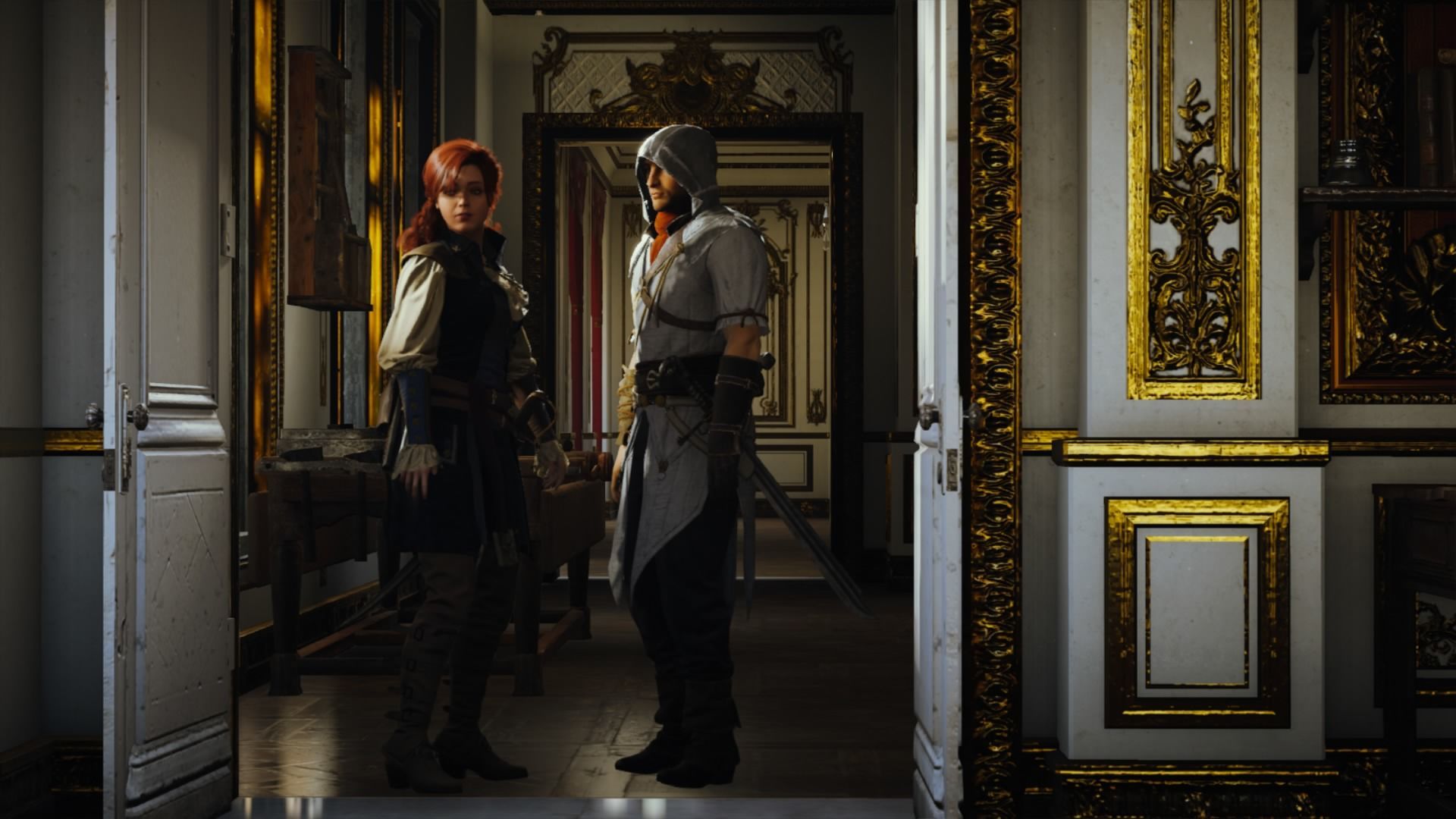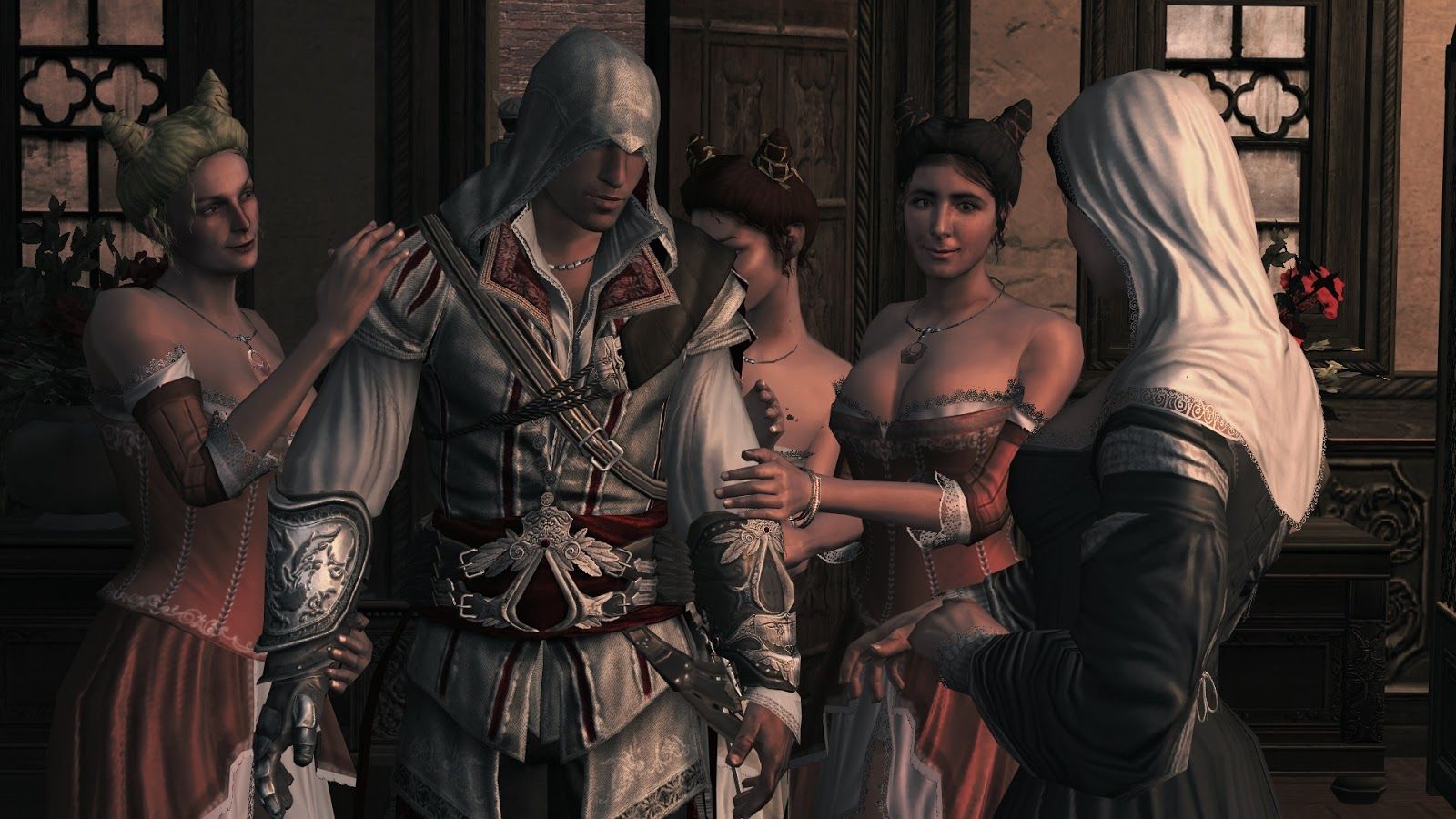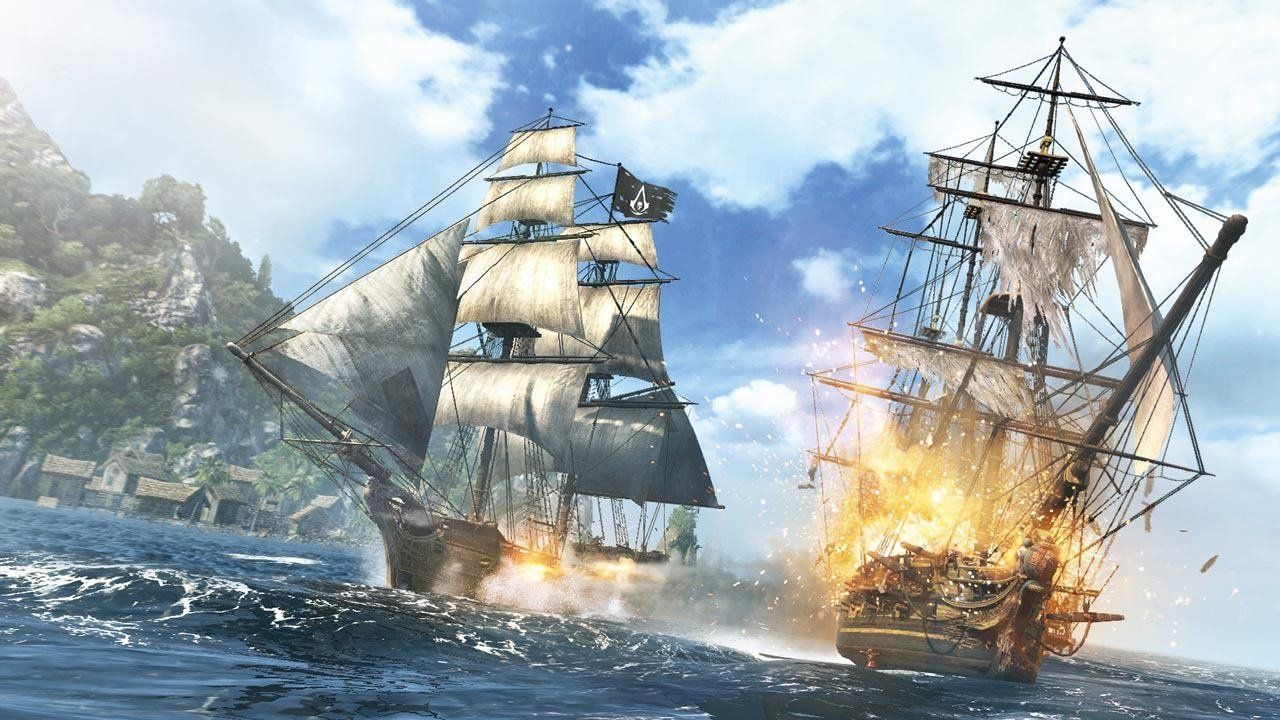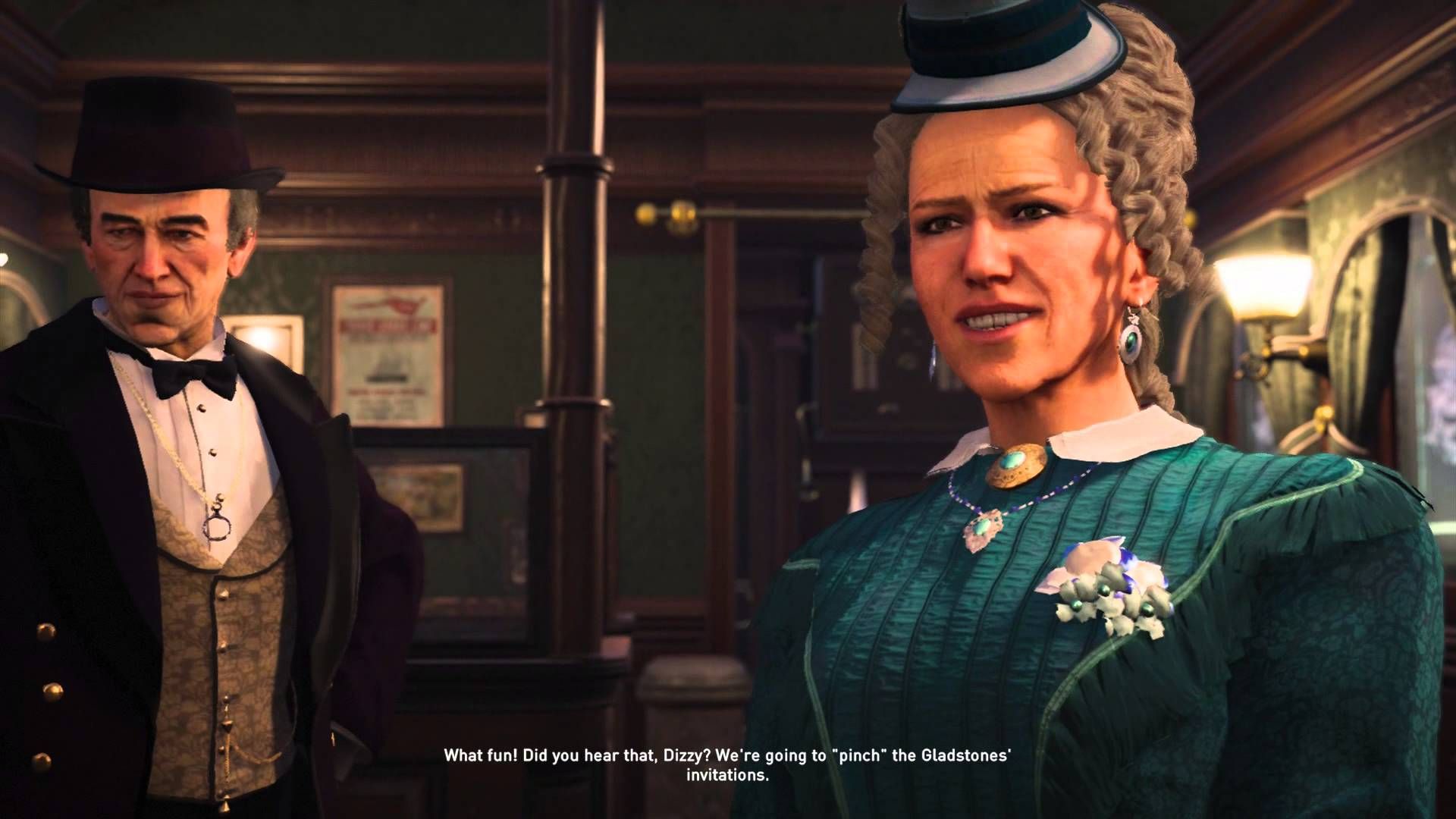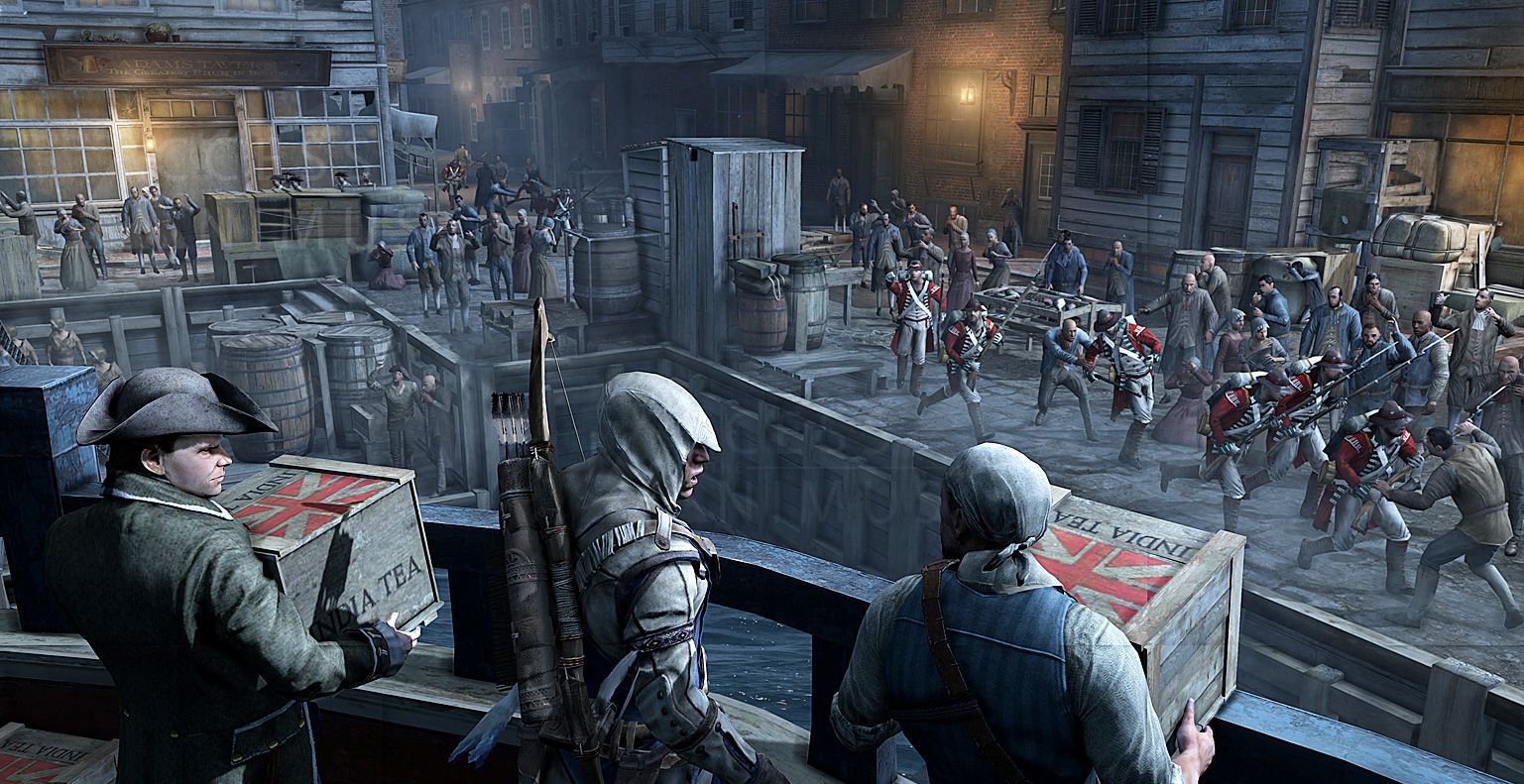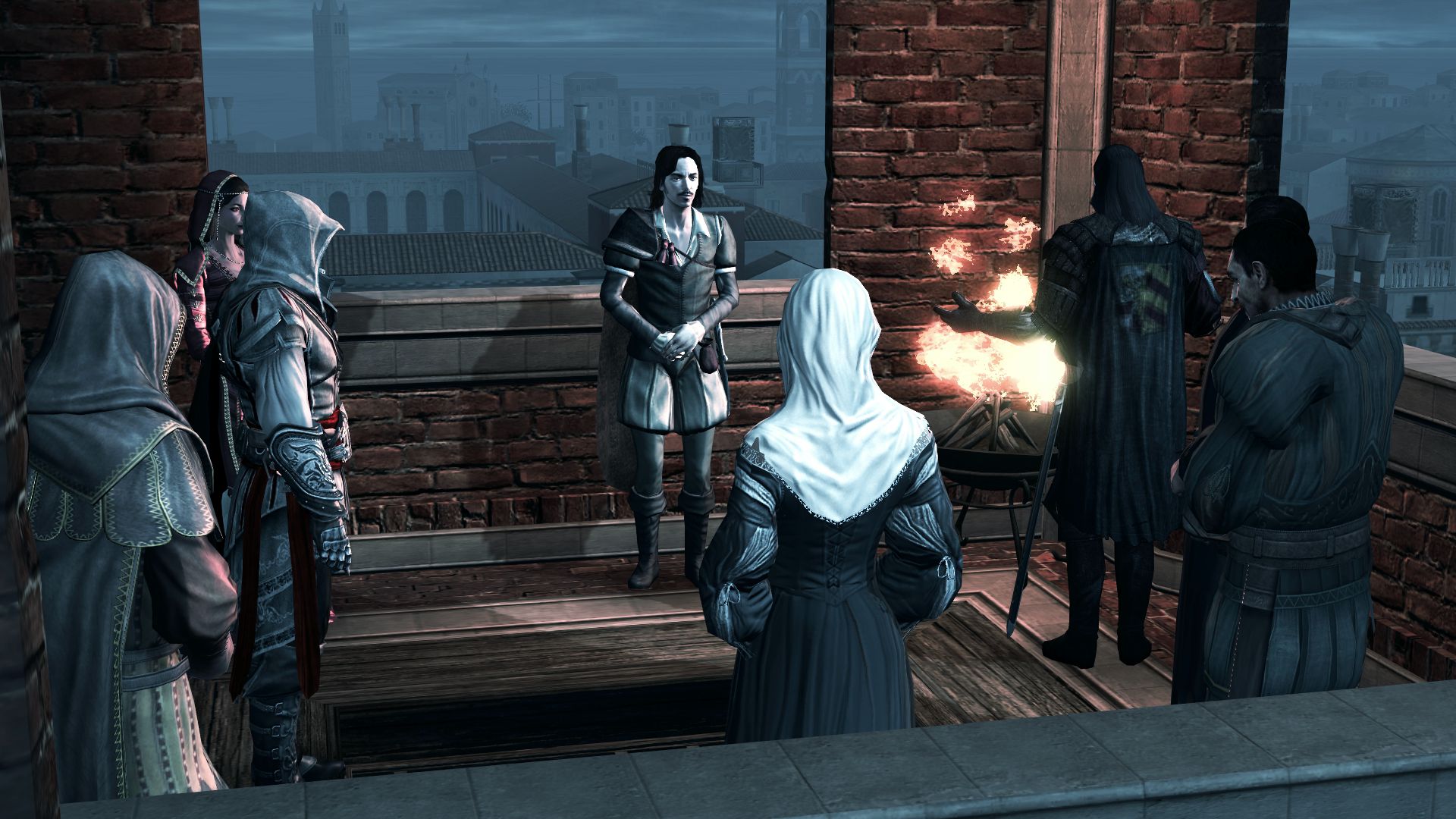Assassin’s Creed is one of my favorite video game franchises. Not all of the games were perfect, and some were downright awful. But the series as a whole is fantastic. Assassin’s Creed takes players all over the world and to a variety of different time periods. It is a beloved historical fiction series that tries its best to correctly portray historical figures and events.
Ubisoft loves to talk about how accurate their Assassin’s Creed series is and to be fair, they’ve done a really good job. Many historical locations throughout the ages were lovingly recreated to near perfection. The developers worked tirelessly to make their maps as accurate as possible. Ubisoft even went so far as to hire a variety of historians to advise them on their games just to make sure they were getting things right. Of course, there are some small things that needed to altered for the sake of the games. One good example is in Assassin’s Creed: Unity. The streets of Paris were very narrow in real life, but were widened in the game to make playing easier.
Naturally, Ubisoft didn’t get everything right. In fact, I’m fairly certain they completely forgot physics and basic biology altogether when designing the games. DNA does not record your ancestor's memories. That is not how DNA works! That and leaping off of Big Ben is a great to become living impaired no matter how many piles of leaves you land in. But there are some horrifically bad historical inaccuracies that would make a historian cry.
15 Terrorists (Assassin’s Creed)
The first Assassin’s Creed gave us our first glimpse into the world of the Assassins. It’s where we first heard the Creed and the mantra “Nothing is true, everything is permitted.” Throughout the game, we learn about how the Assassins were interested in promoting freedom as well as the methods they used to promote their political views. The kills they made were necessary evils in order to protect everyone. Too bad the real Assassins were a bunch of religious zealots who used murder to further their religious ideologies.
The real Assassins were a small Muslim Shiite sect better known as the Nizari Ismailis. It is important to note that both Sunnis and most Shiites did NOT approve of them and viewed the Nizari Ismailis as heretics. They were a group to be feared and hated. The Assassin leader Hasan-i Sabbah would send his agents (fidaiyn) after powerful political targets. Many would stalk their targets for months or years, even going so far as to infiltrate their target’s inner circles and befriending them. The fidaiyn didn’t bother trying to hide their kills or strike from afar. Instead, they would use daggers to stab their victim in the chest in extremely public locations. The Assassins were feared because no one was safe. They were amazing at asymmetric warfare and freely killed political, economic, and religious rivals. It took a Mongol hoard to finally bring an end to the Assassins.
14 Boat Tipping (Assassin’s Creed 4: Black Flag)
Boats have a sail deck and gun decks. Guess which one you put the blasted canons on!
In a Black Flag, you can fully outfit the Jackdaw with 46 broadside cannons, four chaser cannons, and 2 swivel cannons. Just in case that doesn’t sound ridiculous to you, the Queen Anne’s Revenge could only hold 40 cannons and she was a slaving frigate, one of the largest ships around. Not to mention the fact that a lot of the Jackdaw’s cannons were located on the sail deck of all places. If you actually tried putting that many cannons on a ship as large as the Jackdaw it would flip over faster than a slinky on a staircase. This is assuming the Jackdaw doesn’t just sink from the excess weight; because Assassin’s Creed loves to give the middle finger to physics.
Speaking of physics, I feel like it goes without saying but please, do not jump off a building and into a pile of hay. It won’t save you.
13 Child Labor (Assassin’s Creed Syndicate)
So, if I’m not already in big trouble for petitioning that Syndicate needs prostitutes, this will really put me in hot water.
One of the earliest missions in Syndicate has you running through a factory with child workers. It’s depicted as a horrible fact of life. There are even special Child Liberation side quests where you can go and rescue a bunch of kids who are being forced to work in factories. Except, the conditions the kids are shown to work in is far more accurate to the 1840s and 1850s. Things had changed drastically by the time the 1860s rolled around. And by changed, I mean child labor was totally legal. It was also well regulated.
Child labor mills were perfectly legal under Victorian law. Any child over the age of eight was allowed to work so long as they had at least 10 hours of education per week. While it might not have been the best conditions, it wasn’t anything like the kids in Syndicate.
12 Pacifists (Assassin’s Creed 4: Black Flag)
Part of the fun in Black Flag comes from the naval battles. Black Flag actually boasts one of the best naval combat mechanics. You get a variety of different canons with precision, short range, and long range options. All of these can be upgraded to increase their power and/or numbers. Early on, you can unlock the battering ram that lets you smash into enemy ships. Other ships can come join the fight for either side. Once you have subdued your enemy you can board their boat and fight off the crew until the ship is won. It was a lot more exciting than the real thing.
Okay, so real pirates weren’t actually pacifists. They certainly weren’t afraid to get into fights. However, they did avoid them whenever possible. Pirates used fear as their main battle strategy. Blackbeard was a master at it. They would sail after a vessel and hoist the black flag. Ideally, the target ship would simply give up without a fight. Real pirates didn’t want to damage the ships the robbed. Damaged ships weren’t worth as much, and if the ship was better, they would take it for themselves. Most of the time, the crew was left unharmed and it wasn’t uncommon for a good chunk of the sailors to willingly join the pirates. So fights were rare, and murder was rarer. In fact, Blackbeard was thought to have never killed a man. So much for swashbuckling.
11 Murder In The Streets And Strangers In The Neighborhood (Assassin’s Creed: Unity)
There is a lot that is wrong with Assassin’s Creed: Unity, and not just from a historical standpoint. However, one point of historical contention is well… all the murder. I’m not talking about the murders you commit in the game. No, I’m talking about the NPC’s who randomly attack people in crowds and if you don’t stop them, they’ll murder the poor saps on the spot. That didn’t happen, not even in during the French Revolution.
In fact, Paris in the late 1700s was a very communal place. It was less like one big city and more like a collection of small villages that sat side by side. People tended to stay in their area, and since the streets were so tight, everybody knew everyone else. They were well aware of who should and shouldn’t be in the area. It wasn’t unusual for people to tail strangers or accost them as a group, demanding to know what they were doing. Moreover, residents might call the National Guard who would question the strangers, demand to see their papers, or even throw them in jail until someone could come and vouch for them!
10 Bleaching London (Assassin’s Creed Syndicate)
White people are everywhere in Syndicate and everyone in British. Now, I know what you’re thinking. Of course, everyone is British. It takes place in London for crying out loud! Plus, there is that one assassin from India and the Maharaja. Except, 1860s London was far from the pale parade Syndicate makes it out to be.
The 1860s weren’t just the peak of the Victorian Era. The British Empire was spreading far and wide. Canada, India, Australia, New Zealand, South Africa, West Indies, Yemen, Oman, Guyana, as well as various other locations across Africa, South America, Central America, and Asia were all part of the British empire. Not to mention the fact that Britain, and by extension, London, was one of the world’s major international trading centers. People from all over the world would have visited and lived in London in 1868. Except, you don't see that in Syndicate. In fact, there isn’t any real mention of the British empire in the game period.
9 Texas Sharpshooter (Assassin’s Creed 3)
Let’s talk guns. Ever hear of the Texas sharpshooter? It’s an old story about a Texan who fires at a the side of a barn several times. He draws a circle around the holes that are closest together before calling himself a sharpshooter. That guy would be more accurate than most of the guns in most of the Assassin’s Creed games. But Assassin’s Creed 3 was the worst offender because it had the most guns, so that’s the game I’m going to pick on.
For most of history, guns and accuracy went together about as well as cats and mice. The only way to accurately hit someone was to shove the gun against their chest and pull the trigger. Heck, these guns were so inaccurate that George Washington rode right up to and along with British military lines and they still couldn’t hit him! So I’m calling bull on the guys who kept shooting me and on Connor’s ability to shoot someone with a pistol with barely a glance.
8 Just Sign Here (Assassin’s Creed 4: Black Flag)
Assassin’s Creed 4: Black Flag was one of the best Assassin’s Creed games if only for the fact that you get to run around as a freaking pirate! You get to take the helm of the mighty Jackdaw and pilot her throughout the seas, looting and plundering as you go. But what is a pirate captain without their crew? In Black Flag, you can recruit people by saving them on land or taking them from captured vessels at sea.
Becoming a pirate back in the golden age of piracy was easy, you just had to sign on the dotted line. No, I’m not kidding. Before any would-be-pirate ever stepped foot on a boat, they had to sign the pirate’s constitution. While the specifics changed from ship to ship, the general idea was that the constitution would lay out your expected duties, rules of the ship, and just how much of the loot you’d be allotted. Typically, normal members would all have equal shares with the captain and quartermaster having one and a half to two shares. While that might seem a little skewed, it was a lot better than the what you could expect under the merchant marines. Especially since, if you didn't like the captain the only thing needed to depose them was a majority vote. Pirate ships were a democracy after all.
7 Over Exaggerated Class Struggles (Assassin’s Creed: Syndicate)
London, 1868. It was the height of the Victorian Era and the middle of the industrial revolution. The old social hierarchy was in upheaval as the various classes waged war against one another in a Marxist struggle to the death. Or so Assassin’s Creed: Syndicate would have you believe.
In reality, all of that was over and done with by the 1860s (for the most part). Most of the class warfare actually took place in the 1830s and 1840s. It nearly lead to complete social upheaval and a revolution that, thankfully, never happened. By the time the 1950s hit, Britain was in an era of economic prosperity. The average pay of the industrial work doubled between the 1950s and the 1970s. Parliament passed the Second Reform Act in 1867, allowing industrial workers and any man who owned land to vote for the first time. It was such a stable time period that even Karl Marx was upset; saying that Britain’s industrial workers had become too used to economic prosperity. Sorry Evie and Jacob, but there’s no class struggle here.
6 It’s Everywhere! (Assassin’s Creed: Unity)
Door knobs. That’s right, door knobs. Assassin’s Creed: Unity got doorknobs wrong. As silly as that might seem, it’s a pretty egregious error because doorknobs weren’t actually invented until 1878. That’s nearly 100 years AFTER the events in Unity. The same goes for door handles.
Before the invention of the door knob, wealthier individuals would put locks on their doors or place their valuables in locked chests. Those who couldn’t afford locks drilled holes into their doors and tied a strings, chords, or leather to a bar. These bars could be raised to get inside and lowered to shut the door behind you.
Normally, something like this might have been a small oversight. However, door knobs and handles are everywhere! Even the earliest cutscenes have them. It is one of the first goofs a historian will point out. For a game that prides itself on its ability to accurately recreate history, it sure does get the strangest things wrong.
5 Where Are the Prostitutes? (Assassin’s Creed Syndicate)
Okay, I know. The lack of prostitutes in Syndicate was actually praised by many feminists. Prostitutes and call girls were a staple in the Assassin’s Creed franchise, and many were quite happy to see them go. However, if prostitutes ever had to be in an Assassin’s Creed game, it should have been Syndicate!
Victorian society was absolutely obsessed with prostitutes and “fallen women” (women who lost their chastity). Charles Dickens even built the Urania Cottage; a house in Shepherd's Bush that help “rehabilitate” these women. The three Contagious Disease Acts of the 1860s permitted officers to detain and examine any woman who was suspected of carrying a sexually transmitted disease. Women could even be thrown in jail!
This time period was extremely important in the early feminist movements. Women campaigned hard against the Contagious Diseases Acts. It was one of the first times when upper class and working class women fought together to protect their rights. Not only did this movement give rise to modern British feminism, but it was one of the first big successes for the feminist movement. This would have made for a really cool mission or even a neat side story for Syndicate. What a missed opportunity.
4 Missing Frenchmen (Assassin’s Creed 4: Black Flag)
Black Flag is so devoid of the French that it would make Monty Python’s King Arthur absolutely ecstatic. The real irony here is that Ubisoft is a French company. You would think they’d use the opportunity to insert themselves into as many of their games as possible.
There are a variety of ships that come in all sorts of colors and sizes. You can find everything from little brigs to the massive Man O’ Wars. British ships aren’t hard to locate and Spanish ships are plentiful. It can be a lot of fun to wander up to one of their battles and simply pick off the winner. However, there are no French ships. There should be. France was a major power at the time and certainly had an active presence in the Caribbean. Heck, they even had their own pirates! Olivier Levasseur, aka La Buse (The Buzzard) and was one of Benjamin Hornigold’s partners. It’s not like Ubisoft forgot he existed. Levasseur shows up in the mobile game Assassin’s Creed: Pirates. So Ubisoft? Where are the French?
3 The Wrong Guy (Assassin’s Creed Syndicate)
There were two main political rivals that Syndicate focuses on, Benjamin Disraeli and William Gladstone. The Assassin’s choose to side with Disraeli because of his support for the poor and working class. Meanwhile, the game depicts Gladstone as a hard and uncaring man who flat out rejects the Maharaja’s pleas to free India. It’s hard not to see why the Frye twins decided to side with Disraeli.
Except… in reality they should have sided with Gladstone. Yes, Disraeli was a strong supporter of the disenfranchised workers, but he was also a strong conservative who led the Conservative Party. He promoted tradition and was in favor of British imperialism. Meanwhile, Gladstone was a very liberal politician who was head of the Liberal Party. He was a big opponent of imperialism and actively denounced the practice. Plus, Gladstone headed a series of major reforms during his political career. Talk about a mix-up.
2 Where’s the Party? (Assassin’s Creed 3)
I was so excited for the Boston Tea Party in Assassin’s Creed 3. It’s one of the few historical events that I know really well. Yet, when it came time for the party, I wasn’t just disappointed, I was confused. Everyone in the game was so serious. This was an important and planned event that they carried out with stoic determination as they helped cripple the finances of Connor’s enemies. Not much of a party.
Now, the real Boston Tea Party was a drunken riot. The British Parliament lowered the tax on tea from the East India Trading Company. This severely damaged the illegal, black market tea rings. John Hancock was one of many who had made a fortune off of smuggling Dutch tea. So, in a fit of drunken rage, 60 Sons of Liberty boarded three boats in the Boston Harbor dressed as Native Americans and dumped as much of the tea as they could get their hands on. Plus, there was an equally angry (and probably just as drunk) mob cheering for them on land.
The glorious and patriotic Boston Tea Party was really nothing more than a drunken hissy fit.
1 Past Their Time (Assassin’s Creed 2)
The entire Assassin’s Creed franchise revolves around a secret war between the Templars and the Assassin’s. The war began as early as the 6th century BC and continued into present day. The Templars took on the guise of Abstergo Industries, but they are still a thriving secret organization bent on ruling the world.
Except none of that is correct. The real Assassin’s began in 1090 as a group of religious zealots who murdered for their own gain. Meanwhile, the Templar order (aka the Knights Templar) didn’t form until 1118 during the first crusade. They were a religious group of fierce warriors and were, strangely enough, the world’s first bankers. However, the Assassin’s and the Knights Templar were both wiped off the face of the earth. In the Assassin’s case, they ended up picking one too many fights with the Mongols who obliterated them in 1273. For the Knights Templar, most of them were arrested, tortured, and killed on Friday, October 13, 1307. I wouldn’t be surprised if this is why Friday the 13th is considered bad luck. Some Templars did survive, but the order was officially dissolved in 1312.
Basically, most of the Assassin and Templar history is wrong in the first Assassin’s Creed game, but they shouldn’t even exist in Assassin's Creed II (Or any other Assassin’s Creed game). Whelp, there goes the franchise.

